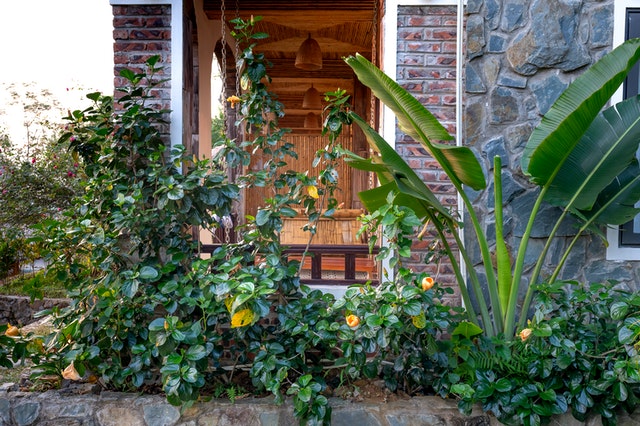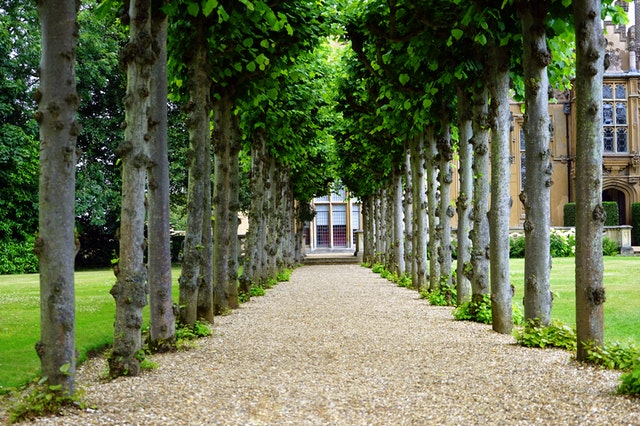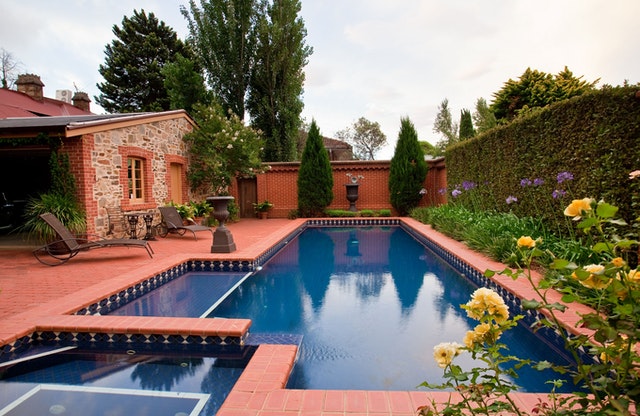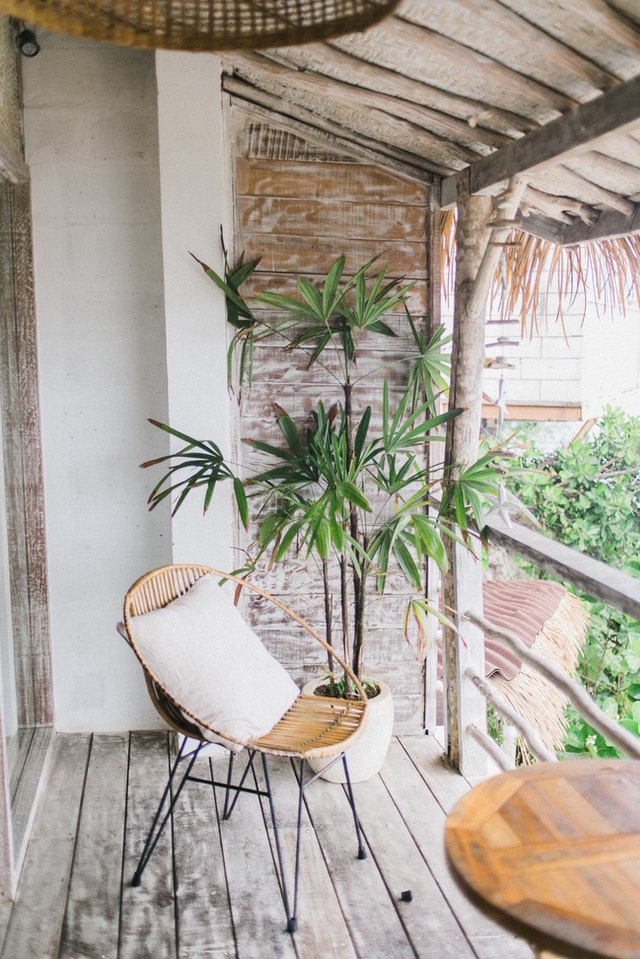Two appropriate biennials should be mentioned here-one is the silver-grey, lethally spiny Scotch thistle (Onopordum acanthium), which grows to a height of 1.8m (6ft) by the second summer. The other, which has contrastingly luminous grey woolly leaves, is the giant mullein (Verbascum olympicum) which reaches over 2m (6ft 6in).
Exotic plants
Contemporary designers of formal gardens often look to ‘foreigners’ to provide a dramatically different summer look and they experiment with these tender exotics to create a garden magnificently out of context with its surroundings. By ‘exotics’, I mean plants that have dramatic foliage and extravagant form. They usually come from sub-tropical parts of the world but can often be grown successfully in cooler climates given a sheltered, warm position where the soil is rich and will not dry out but drains freely. They are often faster-growing than the smaller-leaved plants native to temperate climates and can take over in a competitive situation.
This is not a modest or sentimental garden style-it is bold and exciting. In the modern garden these exotics can be ravishingly different, brilliantly coloured and powerfully foliaged. The hardiest ones, like the fan palm and dwarf fan palm (see opposite), will set the skeletal form of a scheme, used either as an individual focus or in regimented lines, like the orange trees of Versailles. More fragile specimens like daturas may then be slotted in for the summer season, provided they are grown in containers that can be taken back indoors for winter.
Some spiky-leaved yuccas are hardy, such as the trunkless Yucca filamentosa, surviving at temperatures of -10°C (14°F) , but others are less so, like the neatly compact, stemless Y. whipplei, which should be grown only in the warmest areas and well protected, if necessary, from cold winter rain. And Y. gloriosa’s massive 60cm (2ft) long flower panicles carry creamy-white hanging bells over a trunk with dagger-like leaves. The magnificent grey lanceolate foliage of yuccas is not be trifled with, so these are not plants for the family garden. A yucca-like plant, Beschorneria yuccoides, must be grown in a sunny position where it may bake in summer, but it needs some protection from wind, like a south-facing wall, and well-drained soil. Its red flower panicles are a rewarding sight. The spiked foliage of cordylines is less threatening but every bit as stylish. Cordyline australis, the hardiest species, survives at- 5°C ( 23°F), gradually reaching over 15m (50ft), but also consider C. indivisa, with its large crown slowly growing to 3m (10ft) in warmer sites.
From the really arid areas of the world come the extraordinary shapes of cacti. These reservoirs of water grow into tough, distinctive fleshy forms. Most are unsuitable for transplanting but some of the prickly pears (Opuntia) from North America will adjust to growing in areas that are guaranteed frost-free. But unless you have really hot, dry conditions, the choices will be limited. In desert heat, wonderful shapes and colours are to be found, like the little rounded Cereus species and Echinocactus, contrasting with the prickly pears. They are in the colourful company of aloes, like the 2m (6ft 6in) tall, flowering Aloe arborescens, agaves like Agave Americana ‘variegata’, wickedly sharp and with a height and spread of 2m (6ft 6in), or aeoniums, such as Aeonium arboretum ‘magnificum’, which is 60cm (2ft) tall but 1m (3ft 3in) wide, with frost-hardy Zauschneria californica ‘Glasnevin’, a clumpy perennial with tubular scarlet flowers and spurges such as Euphorbia seguieriana, a bushy, frost-hardy plant of 45cm (18in) with glaucous foliage and terminal flowers that are acid-yellow.






